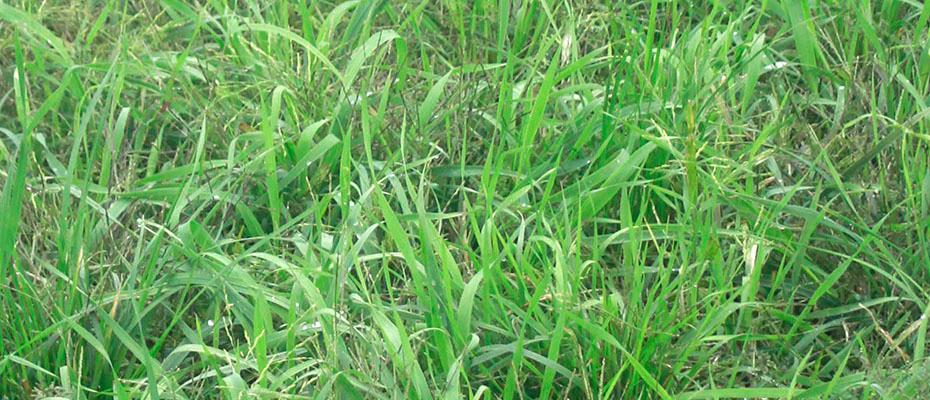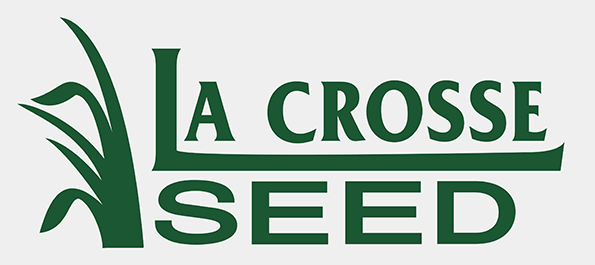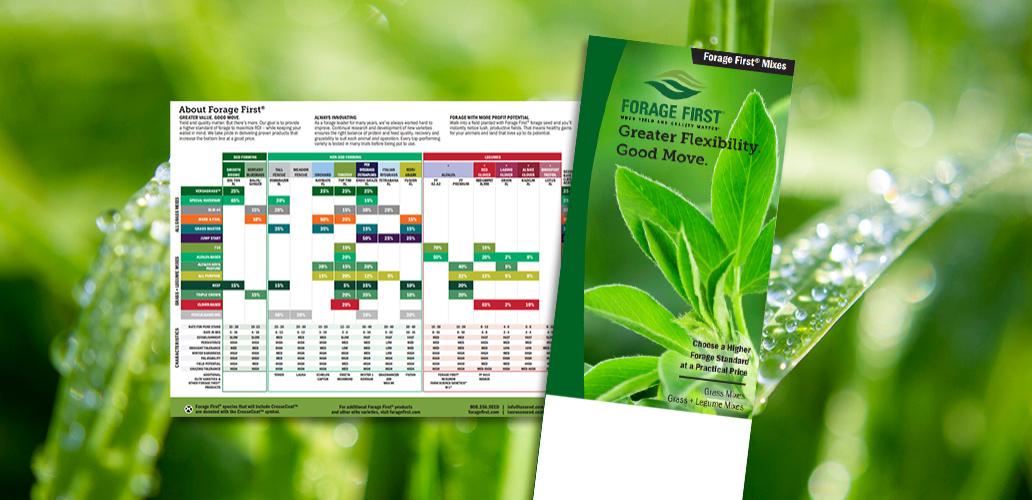Forage First Guide I Summer Select Guide
Greater Value. Good Move. Yield and quality matter. But there’s more. Our goal is to provide a higher standard for forage to maximize ROI– while keeping your wallet in mind. We take pride in delivering proven products that increase the bottom line at a good price.

CHARACTERISTICS:
Establishment: Slow
Persistence: High
Drought Tolerance: Medium
Winter Hardiness: High
Palatability: High
Yield Potential: High
Grazing Tolerance: High
SEEDING:
Seeding Rate:
Alone (lbs./acre): 15-20
Mixes (lbs./acre): 5-10
Seeds/lb.: 138,000
Depth (in.): 1/4-1/2
Planting Time:
Mar.-May; Aug.-Sept.
Emergence (days): 14-21
Life Cycle: Perennial
Adaptation:
Smooth Brome is best adapted to cooler climates and is hardier than Tall Fescue or orchardgrass. It is resistant to drought and extremes in temperature. Smooth Brome is susceptible to disease in areas of high humidity. Smooth Brome grows best on slightly acidic to slightly alkaline well-drained clay loam soils with high fertility but it will also grow well on lighter textured soils where adequate moisture and fertility are maintained. Smooth Brome performs best in a pH range of 6.0-7.5.Growth is poor on soils high in soluble salts.
Establishment:
A clean firm seedbed is needed. Due to the slow germination and establishment of smooth brome, spring seedings are especially preferred in the northern states. In southern areas, late summer seedings are a second option. Fall seedings should be made at least 6 weeks before a killing frost is expected. Seeding rates are typically 3-10 lbs./acre in mixtures, and about 5-20 lbs./acre when seeded alone. If broadcast increase the seeding rate and cultipack after planting.
MANAGEMENT:
Rotational Grazing:
Begin (in.): 10-12
Stop (in.): 4-6
Avg. Days Rest: 20-30
Hay or Haylage Harvest:
Cut boot to mid-bloom
Smooth Brome requires heavy early spring and fall applications of nitrogen to maintain high yields in a pure stand. Mixtures with Alfalfa will require less nitrogen but the alfalfa will usually need phosphorus each year to maintain vigor. Best forage production is obtained from smooth brome when used in a planned cropping system and plowed out after 3-4 years. Its heavy sod makes it an excellent soil conditioning crop when included in cropping systems. In deep, well-drained soils, it will root to 4 ft. Smooth brome performs best in grassed waterways, field borders, and other conservation uses where the forage can be cut and removed while in early bloom. Do not graze the new seeding; cut the first crop for hay. In bromegrass-legume pastures, allow the legume to go to bud or early-bloom stage before turning cattle in to avoid bloat hazard, and manage thereafter for optimum regrowth of the legume. Pastures should not be grazed prior to smooth brome attaining a minimum height of 10 in. at the beginning of the grazing season. Grazing pressures should be adjusted throughout the season to avoid grazing this grass to less than a minimum height of 4 in.
THE FORAGE FIRST ADVANTAGE:
La Crosse Seed is working with breeders of bromegrass to bring varieties to our customers with quicker establishment and vigor, as well as more rapid recovery afterharvest or grazing.

Ratings
Scale 1-9, where 9 = best or most pronounced
Persistence
Drought Tolerance
Winter Hardiness
Palatability
Yield Potential
Grazing Tolerance
Speed of Establishment
- Vigorous, long-lived sod-forming perennial grass
- Excellent drought resistance
- Improved leaf disease/ seedling blight resistance
- Well-suited alongside alfalfa & in mixed stands
- VERY versatile, well suited to grazing & haying
- Easier to plant and establish than common bromegrasses
- One of the best pasture or hay grasses in the adapted area

.png)
.png)


.png)










